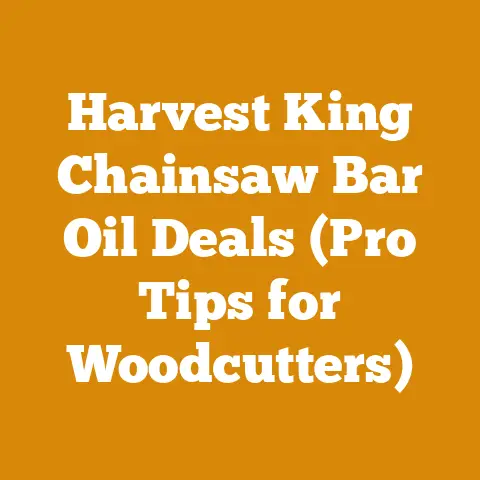Drake Elm Problems (3 Key Tree Health Signs)
Alright, let’s dive into those Drake Elm problems. You’ve got a Drake Elm, and you suspect it’s not doing so hot. I get it. I’ve seen plenty of trees in my time, some thriving, some… well, let’s just say they weren’t winning any beauty contests. I’m going to walk you through the 3 key signs of Drake Elm problems, and, more importantly, what you can do about them right now. We’ll start with the fast fixes, then dig into the deeper issues.
Fast Solutions: A Quick Diagnostic
Before we get into the nitty-gritty, here’s a quick checklist:
- Water, Water, Water: Is the tree getting enough water, especially during dry spells? Give it a deep soak.
- Mulch Matters: Is there a good layer of mulch (about 3-4 inches) around the base, but not touching the trunk? Add some if needed. This helps retain moisture and regulates soil temperature.
- Check for Obvious Pests: Look for visible bugs or signs of infestation (holes, webbing, etc.). Blast them off with a strong stream of water or apply insecticidal soap.
If those quick fixes don’t seem to do the trick, let’s get to those 3 key signs and how to tackle each one.
Drake Elm Problems: 3 Key Tree Health Signs & How to Fix Them
The Drake Elm, with its graceful form and adaptability, is a popular choice in many landscapes. But like any living thing, it can be susceptible to problems. Recognizing the signs early can save your tree from serious decline.
1. Leaf Issues: Yellowing, Spotting, and Premature Leaf Drop
This is often the first signal that something’s amiss. Healthy Drake Elms boast vibrant green foliage. When things go south, the leaves tell the tale.
- Yellowing (Chlorosis): This is often caused by nutrient deficiencies, particularly iron. It can also be a sign of poor drainage or compacted soil.
- Spotting: Various fungal diseases and insect infestations can cause spots on the leaves. Look closely for the type of spotting. Small, raised spots might indicate insect activity, while larger, discolored patches could point to a fungal issue.
- Premature Leaf Drop: If your Drake Elm is shedding leaves in the middle of summer or early fall, something is definitely wrong. This can be caused by drought stress, disease, or insect infestations.
My Story: I remember this one time, helping a friend clear some land for a small orchard. He had a beautiful, mature Drake Elm right in the middle of where he wanted to plant. He was worried about damaging it, so he was extra careful with the heavy equipment. But the following summer, the tree started looking sickly. The leaves were yellowing and falling off way too early. Turns out, the heavy equipment had compacted the soil around the root zone, choking off the tree’s ability to absorb nutrients. We had to aerate the soil and amend it with some compost. The tree bounced back eventually, but it was a close call.
Actionable Steps:
-
Soil Test: This is crucial. A soil test will tell you exactly what nutrients are lacking and what the pH level is. You can usually get a soil test kit at your local garden center or through your county extension office.
- Data Point: According to a study by the University of California, soil testing can increase the success rate of tree fertilization by up to 40%.
-
Fertilize Appropriately: Based on your soil test results, choose a fertilizer formulated for trees. Iron chelate is often effective for addressing iron deficiencies. Apply according to the product instructions.
-
Technical Requirement: Use a slow-release fertilizer to avoid burning the roots.
-
Improve Drainage: If the soil is compacted or poorly drained, consider aerating it. You can use a garden fork or a core aerator. Amending the soil with organic matter, like compost or well-rotted manure, can also improve drainage.
-
Technical Requirement: Aerate in the spring or fall when the tree is actively growing but not stressed by heat or drought.
-
Identify and Treat Pests/Diseases: Carefully inspect the leaves for signs of pests or diseases. If you find something, consult with a certified arborist or your local extension office for identification and treatment recommendations.
-
Actionable Tip: Take photos of the affected leaves and bring them to your local garden center for help with identification.
-
Water Deeply and Regularly: Ensure the tree is getting enough water, especially during dry periods. Water deeply and less frequently, rather than shallow, frequent watering. Aim for about 1 inch of water per week.
-
Technical Requirement: Use a soaker hose or a drip irrigation system to deliver water directly to the root zone.
Cost Considerations:
- Soil test kit: \$15-\$30
- Fertilizer: \$20-\$50 (depending on the size of the tree and the type of fertilizer)
- Aeration: \$50-\$200 (depending on whether you rent equipment or hire a professional)
- Pest/disease treatment: Varies widely depending on the issue.
2. Branch Dieback and Cankers
Dead branches and sunken areas on the trunk or branches (cankers) are serious signs of trouble. They indicate that the tree is struggling to transport water and nutrients, and it’s likely under attack by disease or pests.
- Branch Dieback: This is when branches start to die from the tips inward. It can be caused by a variety of factors, including drought stress, fungal diseases, and insect infestations.
- Cankers: These are sunken, discolored areas on the bark. They are often caused by fungal or bacterial infections. Cankers can girdle a branch or the trunk, eventually killing the tree.
My Experience: I once worked on a project where we were clearing a large plot of land for a new housing development. There were several mature trees on the property, including a few Drake Elms. We were under a lot of pressure to get the job done quickly, and in our haste, we accidentally damaged the bark on one of the Elms with a piece of equipment. We didn’t think much of it at the time, but a few months later, a canker started to form at the site of the injury. Despite our best efforts, the canker spread, and the tree eventually died. It was a tough lesson to learn – even seemingly minor injuries can have serious consequences for trees.
Actionable Steps:
-
Prune Dead and Diseased Branches: Use sharp, clean pruning shears or a saw to remove any dead or diseased branches. Cut back to healthy wood, making sure to disinfect your tools between cuts to prevent the spread of disease.
- Technical Requirement: Make sure you are using proper pruning techniques to avoid damaging the remaining healthy tissue. Cut just outside the branch collar (the swollen area where the branch joins the trunk).
-
Inspect for Cankers: Carefully examine the trunk and branches for cankers. If you find any, consult with a certified arborist. They may recommend removing the affected branch or treating the canker with a fungicide.
-
Actionable Tip: Take photos of the cankers and send them to your local extension office for identification and treatment recommendations.
-
Improve Tree Vigor: Healthy trees are better able to resist disease and pests. Make sure the tree is getting enough water, nutrients, and sunlight. Mulch around the base of the tree to help retain moisture and regulate soil temperature.
-
Technical Requirement: Avoid over-watering, as this can create conditions that favor fungal diseases.
-
Consider Professional Help: If the dieback or cankers are extensive, it’s best to consult with a certified arborist. They can diagnose the problem and recommend the best course of treatment.
-
Actionable Tip: When choosing an arborist, make sure they are certified by the International Society of Arboriculture (ISA).
Tool Selection:
- Pruning Shears: For small branches (up to 1 inch in diameter).
- Loppers: For larger branches (up to 2 inches in diameter).
- Pruning Saw: For branches larger than 2 inches in diameter.
- Chain Saw (for very large branches, but only if you are experienced): While chainsaws are powerful, they require skill and safety precautions. For smaller branches, hand tools are often safer and more precise.
Cost Considerations:
- Pruning shears: \$20-\$50
- Loppers: \$30-\$70
- Pruning saw: \$30-\$100
- Arborist consultation: \$75-\$200 per hour
3. Root Problems: Girdling Roots, Root Rot, and Soil Compaction
Healthy roots are the foundation of a healthy tree. If the roots are compromised, the entire tree will suffer.
- Girdling Roots: These are roots that encircle the trunk of the tree, constricting the flow of water and nutrients. They are often caused by planting the tree too deeply or by confining the roots in a container for too long.
- Root Rot: This is a fungal disease that attacks the roots, causing them to decay. It is often caused by over-watering or poorly drained soil.
- Soil Compaction: Compacted soil prevents the roots from getting the air, water, and nutrients they need. It can be caused by heavy foot traffic, construction activity, or using heavy equipment near the tree.
Personal Story: I remember working with a homeowner who had a beautiful, mature oak tree in their front yard. The tree had been planted many years ago, and it had always been healthy and vigorous. However, in recent years, the tree had started to decline. The leaves were yellowing, the branches were dying back, and the tree was losing its overall vigor. I inspected the tree and discovered that it had several girdling roots. The roots had grown around the trunk of the tree, constricting the flow of water and nutrients. We had to carefully cut away the girdling roots to save the tree. It was a delicate operation, but we were able to successfully remove the roots and improve the tree’s health.
Actionable Steps:
-
Inspect for Girdling Roots: Carefully excavate around the base of the tree to check for girdling roots. If you find any, carefully cut them away with a sharp saw or pruning shears. Be careful not to damage the trunk of the tree.
- Technical Requirement: Avoid cutting away too many roots at once, as this can weaken the tree.
-
Improve Drainage: If the soil is poorly drained, consider installing a drainage system. You can also amend the soil with organic matter to improve drainage.
-
Actionable Tip: Avoid over-watering, as this can create conditions that favor root rot.
-
Aerate the Soil: If the soil is compacted, aerate it to improve air and water penetration. You can use a garden fork or a core aerator.
-
Technical Requirement: Avoid using heavy equipment near the tree, as this can further compact the soil.
-
Apply Mycorrhizal Fungi: Mycorrhizal fungi are beneficial fungi that form a symbiotic relationship with tree roots. They help the roots absorb water and nutrients more efficiently. You can purchase mycorrhizal fungi inoculants at your local garden center.
-
Actionable Tip: Apply mycorrhizal fungi when planting new trees or when transplanting existing trees.
- Consider Professional Help: If the root problems are extensive, it’s best to consult with a certified arborist. They can diagnose the problem and recommend the best course of treatment.
Tools and Materials:
- Shovel: For excavating around the base of the tree.
- Pruning Saw/Shears: For cutting away girdling roots.
- Garden Fork/Core Aerator: For aerating the soil.
- Organic Matter (Compost, Well-Rotted Manure): For improving drainage and soil structure.
- Mycorrhizal Fungi Inoculant: For improving root health.
Cost Considerations:
- Garden fork: \$20-\$50
- Core aerator rental: \$50-\$100 per day
- Organic matter: Varies depending on the amount needed.
- Mycorrhizal fungi inoculant: \$10-\$30
Case Study: Reviving a Stressed Drake Elm in Urban Environment
Background: A homeowner in Denver, Colorado, contacted me about their mature Drake Elm. The tree was showing signs of decline, including yellowing leaves, branch dieback, and stunted growth. The tree was located in a small, heavily compacted yard in a dense urban environment.
Diagnosis: After inspecting the tree, I determined that the main problems were soil compaction, poor drainage, and nutrient deficiencies. The soil was so compacted that it was difficult for the roots to get the air, water, and nutrients they needed. The poor drainage was also contributing to root rot.
Treatment: I recommended the following treatment plan:
- Soil Aeration: We used a core aerator to aerate the soil around the tree. This helped to improve air and water penetration.
- Soil Amendment: We amended the soil with compost and well-rotted manure. This helped to improve drainage and soil structure.
- Fertilization: We fertilized the tree with a slow-release fertilizer formulated for trees. This helped to address the nutrient deficiencies.
- Pruning: We pruned out the dead and diseased branches. This helped to improve the tree’s overall health and vigor.
- Mulching: We mulched around the base of the tree with wood chips. This helped to retain moisture, regulate soil temperature, and suppress weeds.
Results: Within a few months, the tree started to show signs of improvement. The leaves became greener, the branches started to grow more vigorously, and the tree’s overall health improved significantly. The homeowner was thrilled with the results.
Lessons Learned: This case study highlights the importance of addressing the underlying causes of tree problems. In this case, the soil compaction, poor drainage, and nutrient deficiencies were all contributing to the tree’s decline. By addressing these problems, we were able to revive the tree and restore its health.
Beyond the Immediate Fixes: Long-Term Tree Health
Addressing the immediate symptoms is crucial, but long-term tree health requires a holistic approach.
- Proper Planting: When planting a new Drake Elm, make sure to choose a site with well-drained soil and plenty of sunlight. Dig a hole that is twice as wide as the root ball and just as deep. Gently loosen the roots before planting. Backfill the hole with soil and water thoroughly.
- Regular Watering: Water the tree regularly, especially during dry periods. Water deeply and less frequently, rather than shallow, frequent watering.
- Mulching: Mulch around the base of the tree to help retain moisture, regulate soil temperature, and suppress weeds. Use organic mulch, such as wood chips or shredded bark.
- Fertilizing: Fertilize the tree annually with a slow-release fertilizer formulated for trees. Follow the product instructions carefully.
- Pruning: Prune the tree regularly to remove dead, diseased, or damaged branches. Prune in the late winter or early spring before new growth begins.
- Pest and Disease Control: Monitor the tree regularly for signs of pests or diseases. If you find any, take action to control them promptly.
- Soil Management: Maintain healthy soil by aerating it regularly and amending it with organic matter. Avoid using heavy equipment near the tree, as this can compact the soil.
The Firewood Angle: What to Do with a Dead or Dying Drake Elm
Okay, let’s say the worst has happened, and your Drake Elm is beyond saving. What about the wood?
Drake Elm isn’t the absolute top-tier firewood, but it’s definitely usable. It’s a medium-density hardwood that burns reasonably well.
- Heat Output: Drake Elm produces around 20 million BTUs per cord, which is decent. It’s not as hot as oak or hickory (which can hit 25-30 million BTUs), but it’s better than softer woods like pine or poplar.
- Seasoning Time: This is crucial. You need to season Drake Elm for at least 6-12 months, preferably longer, to get the moisture content down below 20%. Green wood is a pain to burn – it’s smoky, doesn’t produce much heat, and can create creosote buildup in your chimney, which is a fire hazard.
- Splitting: Drake Elm can be a bit stringy and tough to split, especially if it’s knotty. A good splitting maul or a hydraulic log splitter will be your best friend here.
My Firewood Philosophy: I’m a firm believer in using what you have. If you’ve got a dead or dying Drake Elm, don’t let it go to waste. Turn it into firewood and heat your home with it. There’s something incredibly satisfying about heating your home with wood you’ve harvested and processed yourself. It connects you to the land in a way that’s hard to describe.
Firewood Preparation Steps:
- Felling the Tree: If you’re felling the tree yourself, please be careful. This is not a job for amateurs. If you’re not comfortable with a chainsaw, hire a professional.
- Bucking: Cut the trunk into manageable lengths (usually 16-18 inches for most fireplaces).
- Splitting: Split the logs into pieces that are easy to handle and will dry quickly.
- Stacking: Stack the wood neatly in a well-ventilated area. Leave space between the rows to allow air to circulate.
- Seasoning: Let the wood season for at least 6-12 months, preferably longer. Check the moisture content with a moisture meter before burning.
Tool Selection:
- Chainsaw: For felling and bucking (use appropriate safety gear and have experience).
- Splitting Maul: For splitting logs by hand.
- Hydraulic Log Splitter: For splitting logs quickly and easily (especially useful for tough-to-split wood).
- Moisture Meter: For checking the moisture content of the wood.
Data Point: Studies have shown that properly seasoned firewood burns up to 50% more efficiently than green wood.
Cost Considerations:
- Chainsaw: \$150-\$500+
- Splitting maul: \$50-\$100
- Hydraulic log splitter rental: \$50-\$100 per day
- Moisture meter: \$20-\$50
Troubleshooting and Common Pitfalls
- Over-Pruning: Don’t remove more than 25% of the tree’s canopy in a single year.
- Improper Pruning Cuts: Make sure you are making proper pruning cuts to avoid damaging the remaining healthy tissue.
- Over-Fertilizing: Too much fertilizer can be just as bad as too little. Follow the product instructions carefully.
- Neglecting Watering: Trees need water, especially during dry periods. Don’t neglect to water your trees regularly.
- Ignoring Pests and Diseases: Monitor your trees regularly for signs of pests or diseases. If you find any, take action to control them promptly.
Next Steps and Additional Resources
- Consult with a Certified Arborist: If you are unsure about how to diagnose or treat a tree problem, consult with a certified arborist.
- Contact Your Local Extension Office: Your local extension office can provide you with valuable information about tree care and pest and disease control.
- Visit Your Local Garden Center: Your local garden center can provide you with the tools and materials you need to care for your trees.
- Online Resources: There are many excellent online resources about tree care, including the websites of the International Society of Arboriculture (ISA) and the Arbor Day Foundation.
Suppliers of Logging Tools and Drying Equipment:
- Bailey’s: (www.baileysonline.com) – A wide selection of logging tools and equipment.
- Northern Tool + Equipment: (www.northerntool.com) – A variety of tools and equipment for wood processing and firewood preparation.
- Arborist Supply: (www.arborist.com) – Supplies for tree care professionals.
Drying Equipment Rental Services:
- This is less common, but some equipment rental companies may offer dehumidifiers or other drying equipment suitable for small-scale firewood drying. Check with local rental companies.
Final Thoughts
Taking care of a tree is a long-term commitment. It requires patience, observation, and a willingness to learn. But the rewards are well worth the effort. A healthy tree can provide shade, beauty, and a sense of connection to nature. And if the worst happens, you can always turn it into firewood and heat your home with it.
Remember, every tree has a story to tell. Listen to what your Drake Elm is telling you. With a little care and attention, you can help it thrive for many years to come. And if you decide to turn it into firewood, well, that’s just another chapter in the story. Happy wood processing!






